Chatbot Architecture: A Comprehensive Guide
Category: AI Assistant

10 mins read
Chatbots are becoming increasingly common in today’s digital space. They are getting smarter and easier to use. They can act as virtual assistants, customer support agents, and more. In this guide, we’ll explore the fundamental aspects of chatbot architecture and their importance in building an effective chatbot system. We will also discuss what kind of architecture diagram for chatbot is needed to build an AI chatbot, and the best chatbot to use.
View also: Top 10 Best ChatGPT App for Android and iOS
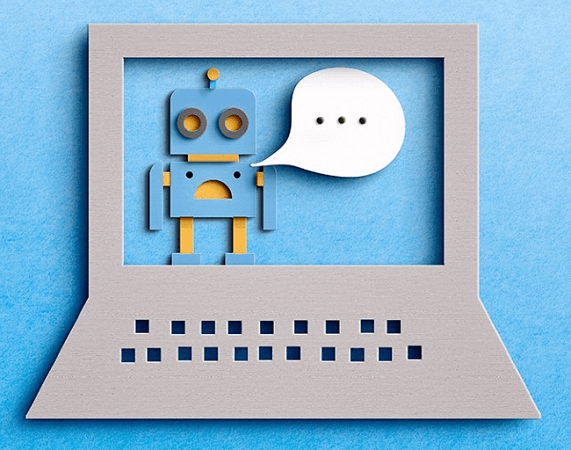
In this article:
Part 1: What is Chatbot Architecture?
Chatbot architecture refers to the basic structure and design of a chatbot system. It includes the components, modules and processes that work together to make a chatbot work. In the following section, we'll look at some of the key components commonly found in chatbot architectures, as well as some common chatbot architectures.
1.1 Key Components and Diagram of Chatbot Architecture
Below are the main components of a chatbot architecture and a chatbot architecture diagram to help you understand chatbot architecture more directly.
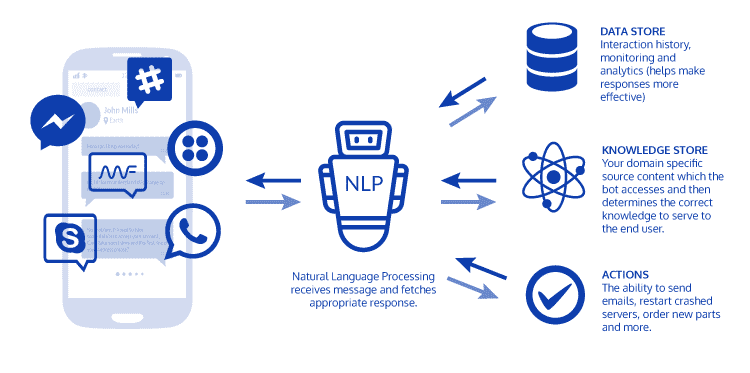
User Interface:
This component provides the interface through which users interact with the chatbot. It can be a messaging platform, a web-based interface, or a voice-enabled device.
Natural Language Processing (NLP):
NLP is a critical component that enables the chatbot to understand and interpret user inputs. It involves techniques such as intent recognition, entity extraction, and sentiment analysis to comprehend user queries or statements.
Dialog Management:
Dialog management handles the flow of conversation between the chatbot and the user. It manages the context, keeps track of user inputs, and determines appropriate responses based on the current conversation state.
Knowledge Base:
The knowledge base is a repository of information that the chatbot refers to when generating responses. It can contain structured data, FAQs, documents, or any other relevant information that helps the chatbot provide accurate and informative answers.
Machine Learning Models:
Machine learning models can be employed to enhance the chatbot's capabilities. They can include techniques like text classification, language generation, or recommendation algorithms, which enable the chatbot to provide personalized responses or make intelligent suggestions.
Integration APIs:
Chatbots often integrate with external systems or services via APIs to access data or perform specific tasks. For example, an e-commerce chatbot might connect with a payment gateway or inventory management system to process orders.
Analytics and Monitoring:
Chatbot architecture may include components for collecting and analyzing data on user interactions, performance metrics, and system usage. These insights can help optimize the chatbot's performance and identify areas for improvement.
The specific architecture of a chatbot system can vary based on factors such as the use case, platform, and complexity requirements. Different frameworks and technologies may be employed to implement each component, allowing for customization and flexibility in the design of the chatbot architecture.
1.2 Common Chatbot Architectures
Chatbot architectures define the structure, components, and mechanisms that enable a chatbot to function and interact with users. The choice of architecture influences how chatbots work and processes user inputs to provide meaningful responses
Rule-Based Architecture:
In this architecture, the chatbot operates based on predefined rules and patterns. It follows a set of if-then rules to match user inputs and provide corresponding responses. Rule-based chatbots are relatively simple but lack flexibility and may struggle with understanding complex queries.
Retrieval-Based Architecture:
Retrieval-based chatbots use predefined responses stored in a database or knowledge base. They employ machine learning techniques like keyword matching or similarity algorithms to identify the most suitable response for a given user input. These chatbots can handle a wide range of queries but may lack contextual understanding.
Generative Architecture:
Generative chatbots leverage deep learning models like Recurrent Neural Networks (RNNs) or Transformers to generate responses dynamically. They can generate more diverse and contextually relevant responses compared to retrieval-based models. However, training and fine-tuning generative models can be resource-intensive.
Hybrid Architecture:
Hybrid chatbot architectures combine the strengths of different approaches. They may integrate rule-based, retrieval-based, and generative components to achieve a more robust and versatile chatbot. For example, a hybrid chatbot may use rule-based methods for simple queries, retrieval-based techniques for common scenarios, and generative models for handling more complex or unique requests.
Intent-Based Architecture:
Intent-based architectures focus on identifying the intent or purpose behind user queries. They use Natural Language Understanding (NLU) techniques like intent recognition and entity extraction to grasp user intentions accurately. These architectures enable the chatbot to understand user needs and provide relevant responses accordingly.
Modular Architecture:
Modular architectures divide the chatbot system into distinct components, each responsible for specific tasks. For instance, there may be separate modules for NLU, dialogue management, and response generation. This modular approach promotes code reusability, scalability, and easier maintenance.
Part 2: Why Is Chatbot Architecture so Important for Chatbots?
Chatbot architecture is crucial for building chatbots as it provides a structured framework for determining how the chatbot works and interacts with users. A well-designed architecture ensures efficient performance, scalability, and maintainability of the chatbot. Here are a few reasons why chatbot architecture is so important:
1: Scalability
Chatbots may experience a large amount of user interaction. The powerful architecture enables the chatbot to handle high traffic and scale as the user base grows. It should be able to handle concurrent conversations and respond promptly.
2: Integration
Chatbots often need to integrate with various systems, databases, or APIs to provide users with comprehensive and accurate information. A well-designed architecture facilitates seamless integration with external services, enabling the chatbot to retrieve data or perform specific tasks.
3: Natural language understanding
Effective architecture incorporates natural language understanding (NLU) capabilities. It involves processing and interpreting user input, understanding context, and extracting relevant information. NLU enables chatbots to understand user intent and respond appropriately.
4: Maintenance and updates
Chatbot architecture plays a vital role in making it easy to maintain and update. The modular and well-organized architecture allows developers to make changes or add new features without disrupting the entire system. It promotes code reusability and promotes continuous improvement.
5: Analytics and insights:
A good chatbot architecture integrates analytics capabilities to collect and analyze user interactions. This data can provide valuable insights into user behavior, preferences and common queries, helping to improve the performance of the chatbot and refine its responses.
The specific architecture of a chatbot system can vary based on factors such as the use case, platform, and complexity requirements. Different frameworks and technologies may be employed to implement each component, allowing for customization and flexibility in the design of the chatbot architecture.
Part 3: How to Choose the Right Chatbot Architecture?
Choosing the right chatbot architecture requires considering various factors and adapting it to your specific requirements. Here are some key considerations to help you make an informed decision:
- Understand your use case: Start by clarifying the chatbot’s main goal, target audience, and intended functionality. For example, is it focused on customer support, sales assistance, or information retrieval? This understanding will guide your architectural choices.
- Analyze user interactions: Study the types of interactions your chatbot has with users. If a chatbot needs to handle complex conversations and provide customized responses, more advanced architectures that leverage natural language processing and machine learning techniques may be appropriate.
- Assess integration needs: Determine whether your chatbot needs to integrate with external systems, databases, or APIs.
- Scalability and performance: Consider factors such as expected user load, peak traffic times, and the need for simultaneous conversations. A scalable architecture that can accommodate growing user demands without compromising performance is critical to successful chatbot deployment.
- Available resources and expertise: Assess the technical resources and expertise available to develop and maintain the chatbot. Choose an architecture that matches your team's capabilities and expertise to make developing, deploying, and maintaining chatbots easier.
- Budget and time constraints: Consider your budget and project timeline. Certain architectural choices may require more development time, computing resources, or external services, which may impact cost.
- Prototyping and testing: Consider building prototypes or conducting proof-of-concept experiments to evaluate different architectural approaches. This helps you evaluate a specific architecture's feasibility, performance, and user experience in real-world environments before adopting it.
Ultimately, choosing the right chatbot architecture requires careful evaluation of your use cases, user interactions, integration needs, scalability requirements, available resources, and budget constraints. It is recommended to consult an expert or experienced developer who can provide guidance and help you make an informed decision.
Part 4: How to Build an AI Chatbot through Chatbot Architecture Diagram?
Building an AI chatbot requires careful consideration of various components and design principles that affect its functionality and performance. Only with the right chatbot architecture can you ensure that your chatbot understands user input, provides accurate responses, and delivers a seamless conversational experience. Follow these steps to build an AI chatbot through chatbot architecture diagram:
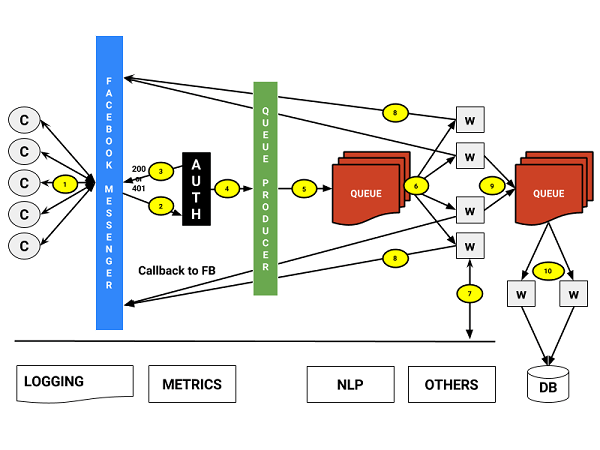
Step 1. Define the Use Case
Clearly define the purpose and objectives of your chatbot. Determine the specific tasks it will perform, the target audience, and the desired functionalities.
Step 2. Choose the Chatbot Architecture
Based on your use case and requirements, select the appropriate chatbot architecture. Consider factors such as the complexity of conversations, integration needs, scalability requirements, and available resources.
Step 3. Data Collection and Preparation
Gather and organize relevant data that will be used to train and enhance your chatbot. This may include FAQs, knowledge bases, or existing customer interactions. Clean and preprocess the data to ensure its quality and suitability for training.
Step 4. Natural Language Processing (NLP)
Implement NLP techniques to enable your chatbot to understand and interpret user inputs. This may involve tasks such as intent recognition, entity extraction, and sentiment analysis. Use libraries or frameworks that provide NLP functionalities, such as NLTK (Natural Language Toolkit) or spaCy.
Step 5. Dialog Management
Implement a dialog management system to handle the flow of conversation between the chatbot and the user. This system manages context, maintains conversation history, and determines appropriate responses based on the current state. Tools like Rasa or Microsoft Bot Framework can assist in dialog management.
Step 6. Machine Learning Models
Train machine learning models to enhance the chatbot's capabilities. Depending on the architecture, this may include models for text classification, language generation, or recommendation algorithms. Utilize popular frameworks such as TensorFlow or PyTorch for model training and deployment.
Step 7. Integration with APIs
If your chatbot requires integration with external systems or APIs, develop the necessary interfaces to facilitate data exchange and action execution. Use appropriate libraries or frameworks to interact with these external services.
Step 8. Testing and Iteration
Conduct thorough testing of your chatbot at each stage of development. Evaluate its performance, accuracy, and user experience. Continuously iterate and refine the chatbot based on feedback and real-world usage.
Step 9. Deployment and Maintenance
Deploy your chatbot on the desired platform, such as a website, messaging platform, or voice-enabled device. Regularly monitor and maintain the chatbot to ensure its smooth functioning and address any issues that may arise.
Remember, building an AI chatbot with a suitable architecture requires a combination of domain knowledge, programming skills, and understanding of NLP and machine learning techniques. It can be helpful to leverage existing chatbot frameworks and libraries to expedite development and leverage pre-built functionalities.
Part 5: Types of Chatbots and the the Most Recommended Chatbot
Based on the chatbot architecture, there are mainly the following types of chatbots:
- 1. Rule-based Chatbots:
- 2. ML-based Chatbots:
- 3. Dialogue System Chatbots:
- 4. Knowledge-based Chatbots:
- 5. Hybrid chatbots:
Rely primarily on predefined rules and conversational processes to respond. They typically use string matching and templated responses to answer user requests. This type of chatbot is relatively simple to establish and maintain, but its flexibility and adaptability are weak.
Use machine learning algorithms to learn how to interact with natural language from large amounts of training data. They can better understand users' intentions and give more intelligent and personalized responses. But it is relatively complex to set up and maintain.
Utilize dialogue system technology to interact by modeling the structure and flow of dialogue. They typically include modules such as speech recognition, natural language understanding, dialogue management, and speech synthesis. This type of chatbot can conduct more natural and coherent conversations, but requires more complex technical support.
Relying on a rich knowledge base, information and suggestions are provided through semantic understanding and knowledge reasoning. They can better answer users' questions, but require a lot of knowledge accumulation and modeling work.
This kind of chatbot combines the above technologies and uses rules, machine learning, knowledge graphs and other methods to provide more comprehensive dialogue services. Usually suitable for more complex scenarios.
In general, different types of chatbots have their own advantages and disadvantages. In practical applications, it is necessary to choose the appropriate chatbot architecture according to specific needs and scenarios.
Now we will introduce you to a very powerful hybrid chatbot - ChatArt. If you don't know what to use, pick it up and give it a try.
ChatArt is a carefully designed personal AI chatbot powered by most advanced AI technologies such as OpenAI o1, GPT-4o, Claude 3.5 Sonnet, etc. It supports applications, software, and web, and you can use it anytime and anywhere. It is not only a chatbot, but also supports AI-generated pictures, AI-generated articles and other copywriting, which can meet almost all the needs of users.
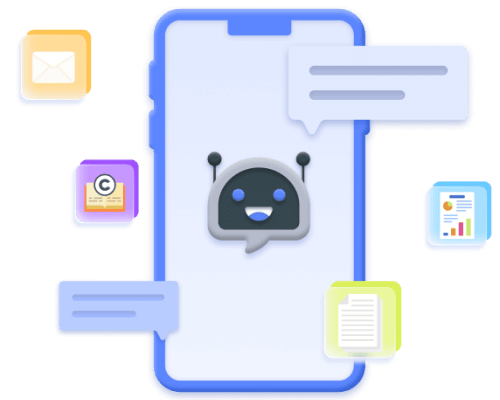
ChatArt Key Features:
- Supported models: OpenAI o1-preview, o1-mini, GPT-4o, Claude 3.5, Gemini 1.5, etc.
- One-click for high-quality and smooth articles, blogs, papers, and more with the AI writing generator.
- Over 100 writing templates supports various text generation needs even in multiple languages.
- Bulit-in multiple advanced AI image-generating models help you create images via text or image. More photo image editing functions are available as well.
- Free trial, no registration required, regular updates.
How to Use ChatArt
Step 1. You can get the ChatArt app or software on your device. Or you can go to ChatArt’s web version to get started.
Step 2. Open the ChatArt app and click on the text box at the top. You can then start interacting with ChatArt via text or voice. Below is a screenshot of chatting with AI using the ChatArt chatbot for iPhone.
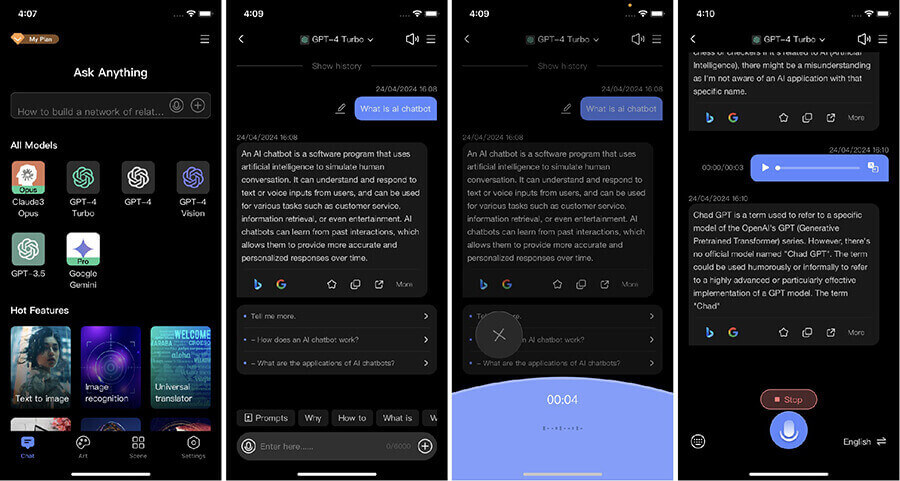
In Conclusion
Chatbot architecture refers to the overall architecture and design of building a chatbot system. It consists of different components and it is important to choose the right architecture of a chatbot. You can build an AI chatbot using all the information we mentioned today. We also recommend one of the best AI chatbot - ChatArt for you to try for free.





















 ChatArt Discord Server
ChatArt Discord Server